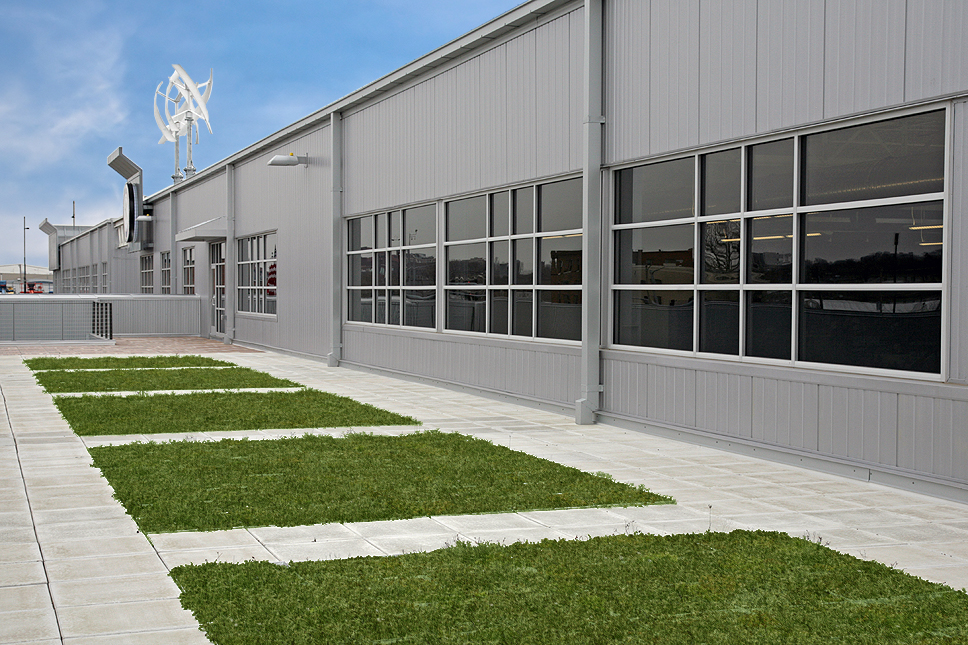Insulated Metal Panels (IMPs) are the ultimate option for single step, factory insulated, energy saving panel systems. For metal building construction, IMPs are an all-in-one single element for wall, partition, ceiling and roof applications that are durable, economical and quick to install.
These panels are on the leading edge of innovation – with interiors of polyurethane foam core and exteriors available in 26-gauge, 24-gauge or 22-gauge steel panels, IMPs offer many advantages to building owners. They can be installed in most weather types and easily conform to energy codes. However, there are some things to keep in mind when handling, storing, and installing your panels.
Follow these tips when accepting delivery, unloading and storing your panels to keep your project on schedule and your build successful:
- Review unloading and storage instructions. Do not skip checking inventory of what is delivered.
- Ensure that unloaded panel bundles are stored at an angle in order to keep water from pooling on the packaging.
- Slope panel bundles so that water doesn’t run in between the shrink wrapping, but instead cascades off the shrink wrap.
- Use spreader bars and straps to off-load long/large bundles from trucks. Incorrectly offloading materials may cause damage to your panels.
- Avoid having panels stored on site for several months at a time, prior to starting installation.
- Remember that these are large bundles. Think through the proper placement on your job site and plan your storage according to which bundles will be required first.
When it’s time for installation:
- Inspect panels for any damage prior to starting installation. Do not skip the panel inspection! This will save you a lot of time and effort in the long run.
- Make sure at least one crew member is certified for IMP installation. This allows a better understanding of the importance of the vapour barrier and how it is achieved.
- Ensure that your building walls are true and plumb. Installing IMP panels require much tighter tolerances than simple single skin panels.
- Be prepared to use shims behind panels.
No matter how much you plan for the perfect build, we all run into installation errors or problems on the job. Be mindful of some of these issues that can impact your build timeline and installation:
- Failure of plumbing in the building. If the building is not plumb, the IMP male and female joints will not interlock smoothly, and your erector will have to fight the joints for each panel. You could end up with a vapour barrier breach by not having the panels correctly interlocking with each other.
- Some panels will require field cutting. Make sure you have the correct tools/saws on site that need to be used. You’ll want to avoid saw blades that create heat as this will cause damage to the paint and void your factory warranty. Pay attention to your saw blades as well – incorrect saw blades may cause steel panels to delaminate from the foam core.
- It is recommended that no more than 33 percent of the width of the panels be cut down for items such as doors and windows. Cutting more will weaken the integrity of the panel and may cause oil canning (wrinkles or bubbles) to the exterior steel skin. Architects and building designers need to lay out their window and door locations so that the least amount of panels are cut.
- When cutting, measure twice before cutting once! Lead times to replace two or three panels is significantly longer than replacing a single skin panel.
- Use the proper equipment to lift panels into place against the building. Incorrect lifting and placement may cause steel panels to delaminate from the foam core, causing unsightly bubbles and oil canning.
- Pay the utmost attention to installation of trims and caulking. If caulking is not placed at correct locations, the vapour barrier may be breached and heat loss will occur.
- If you’re seeing condensation, that is typically an indication of incorrect installation.
IMPs are a great fit for metal building construction across diverse projects, such as fire halls, churches, warehouses, hockey arenas, hangars, office buildings and more. For more information about IMPs, review the online resources available from Robertson Building Systems or contact your District Manager.


